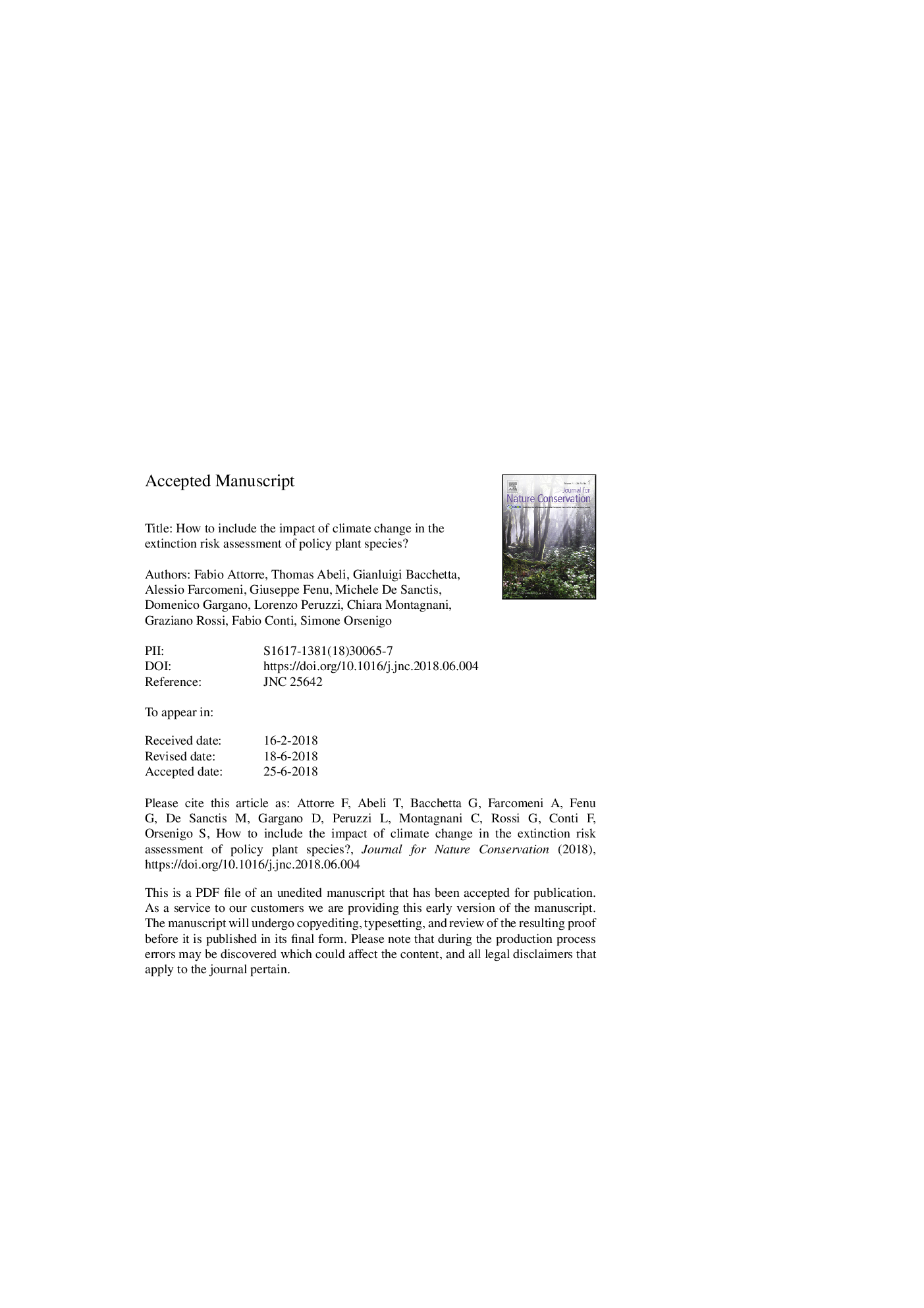| Article ID | Journal | Published Year | Pages | File Type |
|---|---|---|---|---|
| 8849239 | Journal for Nature Conservation | 2018 | 23 Pages |
Abstract
Climate change can have significant impacts on the survival of plant species. However, it is seldom included in the assessment of the extinction risk according to IUCN Red List criteria. Lack of data and uncertainties of predictions make difficult such inclusion. In our paper we present an approach, in which the effect of climate change on plant species spatial distribution is used to prioritize conservation within IUCN categories. We used, as a case study, 37 Italian policy species, relevant for conservation, and listed in the Habitat Directive and Bern Convention, and for which a Red List (RL) assessment was available. A stochastic SDM incorporating data on plant dispersal, generation length, and habitat fragmentation was used to predict a range shift due to climate change according to two climatic scenarios (RCP 2.6 and 8.5). No species was predicted to become extinct in the considered timespans (2050 and 2070) due to climate change, and only two were characterized by critical decline probabilities. However, all taxa were potentially affected by climate change through a reduction of their range. In all RL categories, species with the highest predicted reduction of range were those from lowlands, where fragmentation of natural habitats has occurred in the last decades. In these cases, despite some limitations, assisted migration can be considered a suitable conservation option.
Related Topics
Physical Sciences and Engineering
Earth and Planetary Sciences
Earth and Planetary Sciences (General)
Authors
Fabio Attorre, Thomas Abeli, Gianluigi Bacchetta, Alessio Farcomeni, Giuseppe Fenu, Michele De Sanctis, Domenico Gargano, Lorenzo Peruzzi, Chiara Montagnani, Graziano Rossi, Fabio Conti, Simone Orsenigo,
